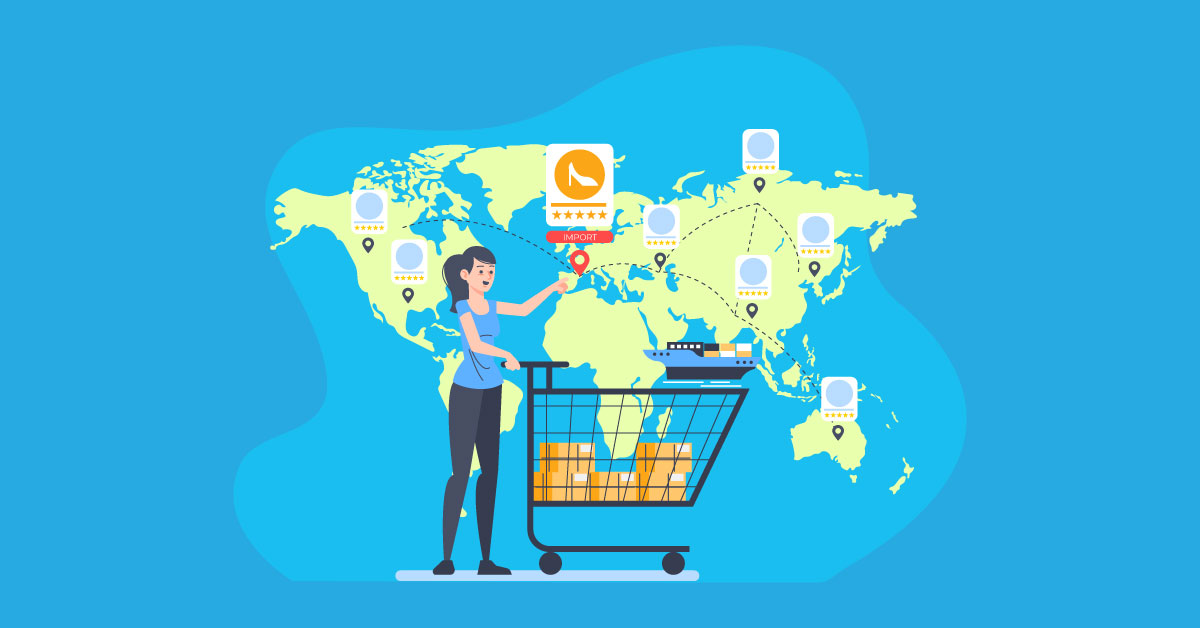
Are you seeing an uptick in sales and considering tapping an international audience? It’s probably time for you to shift to an international eCommerce sales and marketing strategy to boost your sales and expand to different markets. Here’s our guide to cross border eCommerce and how it can help your eCommerce store!
Why Should You Pursue Cross Border eCommerce?

1. International Recognition
If you implement cross border eCommerce in your business, you will get international exposure. You’ll get an edge over your competitors who are still competing locally. Plus, more people will learn about your products.
2. Expanded Market Reach
Tapping the national market is already ambitious, especially for growing small businesses. Going international is a win for many eCommerce platforms since you’re tapping a market that hasn’t been touched by your competitors yet.
3. Solve Customer Pain Points
Some consumer products offered by your competitors globally won’t be available for your customers locally. Or a local product lacks features or solutions for your customers. That said, you can help customers with their pain points. In turn, they can be your go-to brand.
4. Higher Demand
Once you’ve established a loyal customer base at the local, regional, and national levels, having an international base can change the game. You can also build trust and acquire loyal customers using the right marketing tools and strategies. Additionally, you can get higher demand and sales once you go international.
Cons of Cross Border eCommerce

1. Shipping & Returns
One disadvantage of cross border eCommerce is shipping your items to another country. You will need to find an international shipping partner like FedEx or UPS or a third-party service to deliver the items to your customer’s country. Or, if that’s expensive, you can use shipping apps that would reduce shipment costs.
Additionally, returns can be an issue of concern for your customers. Some customers might have issues returning items, considering that your base is in another country from theirs.
2. Payment & Fraud
Another challenge in implementing cross border strategies is payment. Although credit cards are accepted globally, payment wallets like Google or Apple Pay aren’t available internationally. PayPal, Stripe, and Adyen are the well-known international payment gateways you can add to your eCommerce store.
Unfortunately, some might have processing fees that these gateways charge you for. However, these payment gateways can help you reach your international audience without using various payment apps to cater to everyone.
Additionally, fraud is another issue regarding payments. As you expose your brand to an international audience, your eCommerce store can face fraud attacks, which could pose serious threats to your business. That said, it would be better to get ahead by installing anti-fraud measures.
3. Taxes, Costs, and Currency Conversions
Taxes could be a disadvantage of going cross border. Although you won’t shoulder the taxes, your customer will. And that could turn them off and rely on local products instead of buying internationally.
On top of that, hidden costs may also turn away your international audience. You want to ensure transparency in product pricing, shipping prices, taxes, and other costs during checkout.
Finally, currency conversions are another cause of concern when doing cross border sales. Foreign exchange rates vary daily. It’s best to set a converted price rather than relying on the ever-changing exchange rates. Plus, if you can, include any fees that the buyer might incur or disclose before they purchase.
Effective Cross Border eCommerce Strategies
1. Start Slow and Small

Going international doesn’t mean you immediately open your eCommerce store to the whole world. That requires enterprise-level solutions, and you’ll need a big budget to accomplish your goals. Instead of going big, do it per country or region!
For example, you can open your eCommerce store to Canadian residents. If that’s getting traction, and you want to add more North American countries to the mix, then you can add Mexico a few years down the road. Or, you can go to the other side of the world, like Asia or Australia.
2. Outsource Your Marketing and Customer Service to a Local Team

If you’re transitioning towards a cross border strategy, it’s best to know what’s on the ground with a local team. You don’t want to go in blindly, assume, or do a guessing game when marketing or selling internationally. Hiring local freelancers is your best option if you want to keep the company remote.
Additionally, you can also hire local freelancers for customer service. They know the language better and can talk to your customers in real time instead of waiting for hours due to the time difference.
3. Post Facebook Ads

One of the best ways to reach your international audience is by posting Facebook ads. Facebook allows you to target a worldwide audience. One challenge of doing this is not all people can engage with your ads or view them.
An alternate approach will be producing various creatives depending on the country or city you’re targeting. This means you need different videos, images, and text to reach your target audience.
4. Localize Your Website

Website localization can be challenging, considering you want to personalize a user’s experience. Most eCommerce platforms have a dedicated localization app helping you customize the website depending on your visitor’s location.
For instance, Shopify has location and translation apps. This will detect your visitor’s location, allowing them to change country and language. Plus, you can even customize messaging or branding.
5. List on International eCommerce Sites

If hiring local freelancers or localizing your website is expensive, posting your products on international eCommerce sites can get your brand noticed. You can start by posting them on Amazon, eBay, and Etsy. With these options, you don’t have to worry about any hidden fees or costs.
6. Create Dedicated Social Media Accounts

Once you’ve started your foray into international selling, it would be good to create social media accounts for countries you’ve opened sales to. This way, the local target audience can refer to the country-based social media account for updates or any issues.
7. Partner with Local Influencers

One effective way to connect with your new international audience is by tapping a local influencer. Micro-influencers are your best shot at introducing your brand to a wide audience. But make sure to choose an influencer that fits your brand and is aligned with your values.
About the author

Katrina Pascual
Katrina is a content writer specializing in graphic design, marketing, social media, and technology. In her spare time, she writes monthly personal blogs to practice her craft.
Table of Contents
- Why Should You Pursue Cross Border eCommerce?
- 1. International Recognition
- 2. Expanded Market Reach
- 3. Solve Customer Pain Points
- 4. Higher Demand
- Cons of Cross Border eCommerce
- 1. Shipping & Returns
- 2. Payment & Fraud
- 3. Taxes, Costs, and Currency Conversions
- Effective Cross Border eCommerce Strategies
- 1. Start Slow and Small
- 2. Outsource Your Marketing and Customer Service to a Local Team
- 3. Post Facebook Ads
- 4. Localize Your Website
- 5. List on International eCommerce Sites
- 6. Create Dedicated Social Media Accounts
- 7. Partner with Local Influencers










